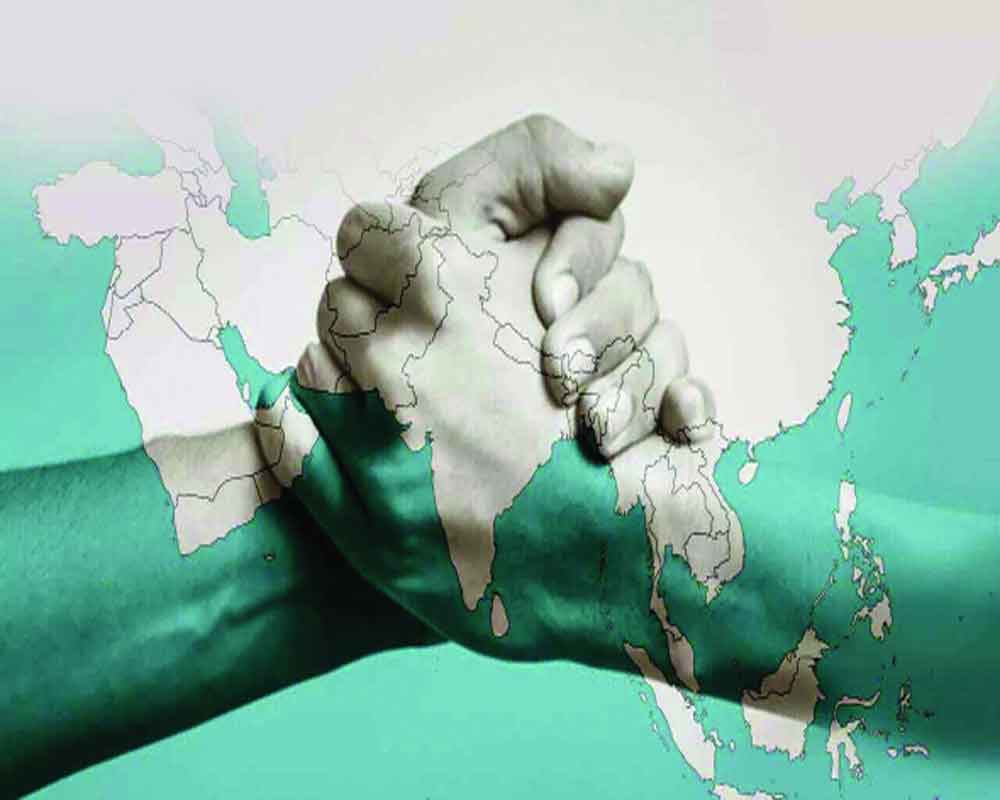India emerges as the kind, wise no-frills ally to its neighbours
India has been an outlier in its neighbourhood for some time. The size of the country, home to a rich diversity of religions and regional identities, apart, the Indian economy has been a shining story. This story gets a sharper edge when almost every nation on its borders is going through a financial crisis.
Pakistan, Sri Lanka, and to an extent Bangladesh are looking for international aid (read an IMF bailout). The frequency of such international bailouts has been highest for Pakistan, followed by Sri Lanka and Bangladesh. As India and perhaps the entire neighbourhood celebrates 75 years of being an independent sovereign in their own rights, the growth has been fractured for the region.
Domestic economic policies, institutional wisdom in key sectors, domestic politics and upheavals, faith in Constitution and Constitutionally approved governance framework have all contributed to creating this study in contrast in Southeast Asia. India has clearly emerged as a leader not just in the neighbourhood but also on the global stage. However, the move towards the next level of influence in the chaotic chess board of international relations must be careful and measured, with a firm vision for the next 25 years.
Bangladesh and Sri Lanka stand as success stories of India’s stated position of neighbourhood first. India was the first country to establish diplomatic relations with Bangladesh in 1971 and both countries have been moving towards steady bilateral relations by building on shared culture, history, and geography.
India and Bangladesh form an inseparable part of critical landmass in South-east Asia, with complementary resources and geography. The two countries share 54 rivers, besides one of the largest mangrove forests in the world. The Sundarbans, located in one of the most fragile bioclimatic zones around the globe, provides exclusive breeding ground for many endangered species, besides offering an almost live glimpse into the impact of climate change.India and Bangladesh have in the past four decades worked closely in preserving these unique natural sites from decay and destruction, much of which is manmade. India needs to closely follow its neighbour’s economic trajectory if New Delhi wants to stand tall in the international order.
Chinese Foreign Minister Wang Yi was in Bangladesh this week, where one of the promises made was to increase duty free access for Bangladeshi garments, woven products into the Chinese market by one per cent. Already, China is one of the largest trade partners with Bangladesh. China has also invested billions of dollars in building major infrastructure projects, ranging from bridges, seaports, access roads in Bangladesh.Meanwhile, Bangladesh has turned to China to push back the millions of Rohingya refugees, as the country is staring at an economic crisis. China had brokered a reparation of nearly 0.7 million refugees in 2017. This aid from China comes at a cost, which puts Bangladesh in a tricky situation when it comes to balancing bilateral relations with the US and India.
Bangladesh had to issue a support statement for “One China policy” amid the visit of senior US leader from the legislative wing, Nancy Pelosi to Taiwan.
Sri Lanka, going through a financial crisis of its own, is economically dependent on China. Colombo would find it difficult to stop a Chinese spy ship docking at its port. India and some of its western allies have so far managed to delay the ship, but it is a matter of time before China takes an aggressive stance.
India has to start reshaping its narrative during the ongoing financial crisis in the two countries and emerge as the kind, wise no frills ally.
(The author is a foreign policy commentator.)
























